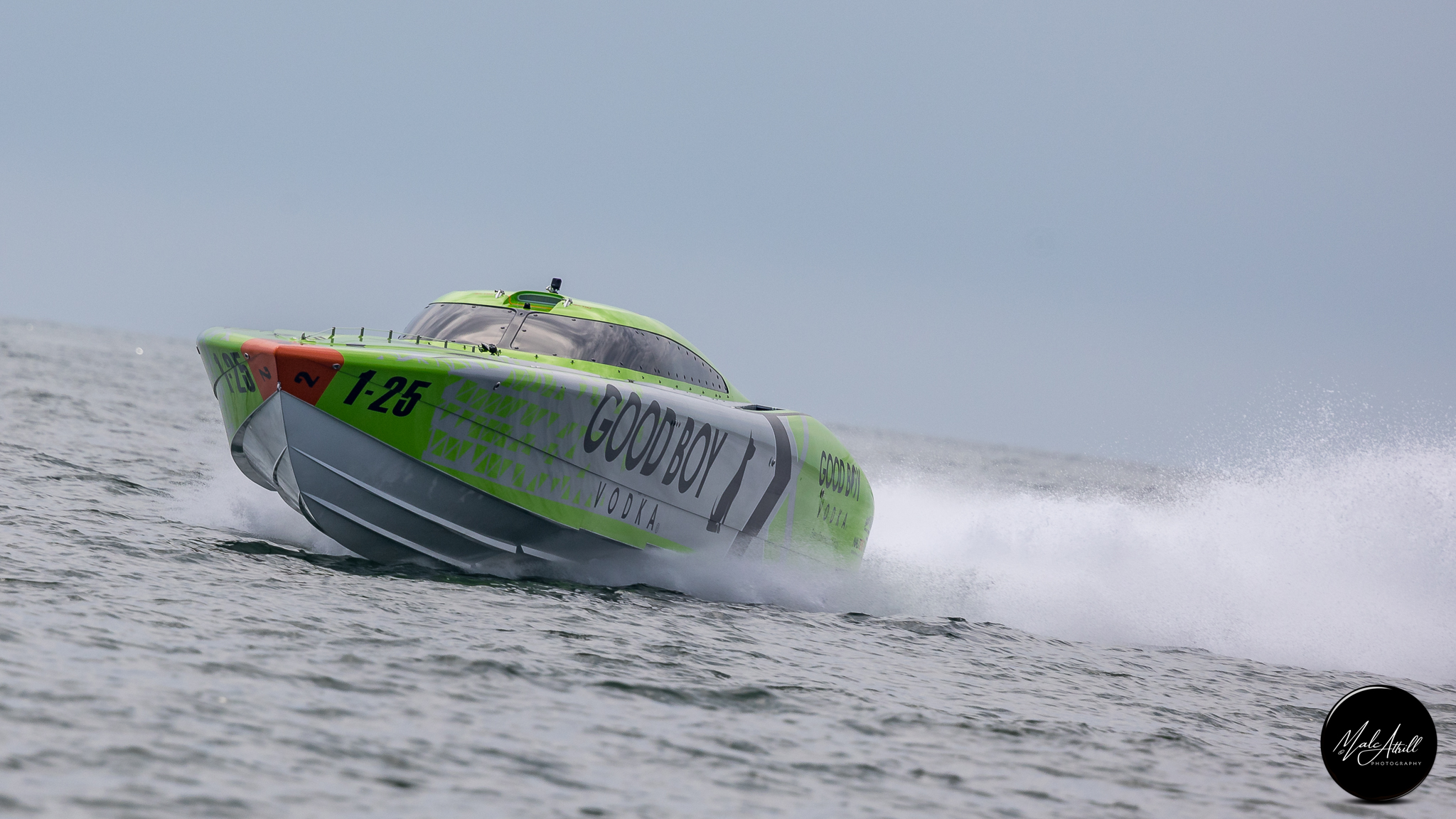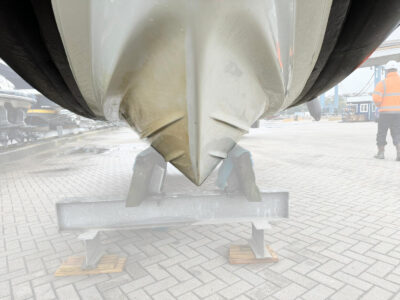Ceramic Coating vs Anti-Fouling: A Detailed Comparison


For decades, boat owners and marine professionals have relied on anti-fouling paints to protect hulls below the waterline. However, with advancements in technology, many are now exploring ceramic coatings as an alternative offering long-lasting protection and improved performance. We know it works above the waterline but can ceramic coating really withstand the harsh conditions below the waterline? Recent tests on a heavily used training RIB and Team 25’s Goodboy Vodka Race Boat show it can, with results that are nothing short of remarkable.
The Test: Ceramic Coating on RIB hull
To put ceramic coating to the test, a training RIB was selected. These boats are exposed to heavy use and challenging marine environments, meaning they need robust protection. Typically, such boats would rely on anti-fouling paints to combat the build-up of marine organisms like algae and barnacles. However, ceramic coatings offer a new type of protection, designed to prevent fouling while also enhancing performance.
After several months of daily use in saltwater, heavy fouling areas, and varying weather conditions, the ceramic-coated RIB delivered incredible results:
- Minimal Fouling: Unlike traditional anti-fouling, which often leaves the hull with significant marine growth, the ceramic coating resulted in only a thin biofilm that could be easily wiped away.
- Improved Speed & Efficiency: With less fouling and a smoother hull, the RIB maintained its speed and fuel efficiency for longer, showing minimal drag compared to boats coated with traditional anti-foul.
- Durability: Even after heavy use, the ceramic coating showed no signs of degradation. It provided continuous protection against the saltwater, without the need for frequent reapplications.

Image of 12 months of usage. (Left)Uncoated (Right Coated).
Ceramic Coating vs. Anti-Fouling: A Detailed Comparison
Although anti-fouling paints have been the standard for decades, ceramic coatings offer a number of advantages, particularly for heavily used vessels like RIBs. Here’s how ceramic coatings compare to traditional anti-fouling below the waterline:
1. Smoother Hull, Less Drag
Anti-fouling paints, while effective in preventing the growth of marine life, often leave a rough texture on the hull. This increased friction can reduce the boat’s speed and efficiency. Ceramic coatings, however, create a smooth, hydrophobic surface that significantly reduces friction. In the case of the training RIB, the smoother hull allowed for improved performance throughout the season.
2. Long-Lasting Protection
Anti-fouling paints need to be reapplied regularly, often annually, particularly for boats that are used frequently. In contrast, ceramic coatings offer long-term protection. The ceramic coating applied to the training RIB remained effective after months of exposure, making it a more cost-effective solution in the long run.
3. Easier Maintenance
Boats treated with ceramic coatings require less frequent and intensive cleaning. Marine growth struggles to adhere to the slick surface, and any biofilm that does develop can be easily removed. Compared to anti-fouled boats, the RIB in our test required far less maintenance, allowing for more time on the water and less time in the dock.
4. Environmentally Friendly
Anti-fouling paints often contain harmful chemicals, like copper, that leach into the water and can damage marine ecosystems. Ceramic coatings are non-toxic and eco-friendly, making them a more sustainable option for protecting your boat and the environment.
Why Ceramic Coating Below the Waterline is a Game-Changer
The impressive results from the training RIB suggest that ceramic coating below the waterline is not only viable but also highly effective. Here are some key reasons why ceramic coatings are a game-changer for boat protection:
- Cleaner Hull for Longer: The hydrophobic properties of ceramic coatings make it difficult for marine organisms to attach, keeping the hull cleaner for longer.
- Improved Performance: With less marine growth and a smoother hull, ceramic-coated boats maintain their speed and fuel efficiency more effectively than anti-fouled vessels.
- Long-Term Cost Savings: Although ceramic coatings may come with a higher upfront cost compared to anti-fouling paint, the longer intervals between applications, reduced maintenance, and better performance make them a more economical choice in the long term.
- Environmentally Responsible: Ceramic coatings contain no harmful chemicals, reducing the environmental impact on marine ecosystems, which is an important consideration for today’s environmentally conscious boat owners.
Final Thoughts: Should You Make the Switch?
For boat owners looking for improved performance, long-lasting protection, and a more environmentally friendly solution, ceramic coating below the waterline is a smart choice. The success of the heavily used training RIB in the recent test demonstrates that ceramic coatings can not only compete with traditional anti-fouling but often exceed its benefits.
While ceramic coatings might not yet be the standard for all vessels, they offer a promising alternative, especially for boats that experience frequent use or are subject to tough marine conditions. If you’re looking to reduce hull fouling, maintain better fuel efficiency, and cut down on maintenance time, ceramic coating below the waterline could be the answer you’ve been searching for.
